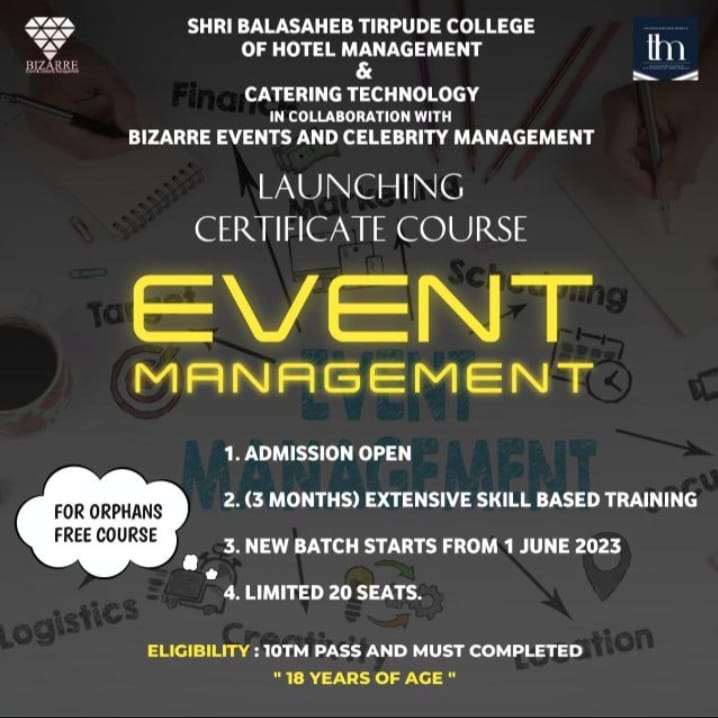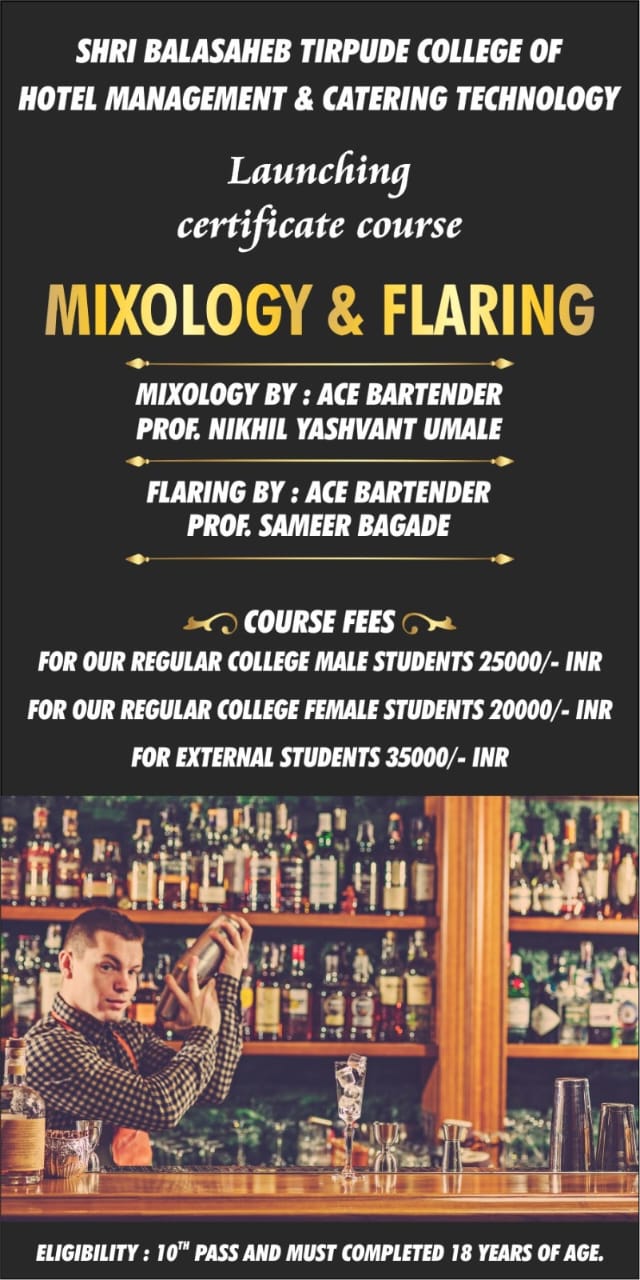Value Added Courses

INTRODUCTION FOR OUR EVENT MANAGEMENT PROGRAM
Event management is the process of creating and maintaining an event. This process spans from the very beginning of planning all the way to post-event strategizing. At the start, an event manager makes planning decisions, such as the time, location, and theme of their event. During an event, event managers oversee the event live and make sure things run smoothly. After an event, event managers are tasked with reviewing event data, submitting KPI and ROI findings, and staying on the ball for any post-event offerings.
All different branches of planning go into event management, including various types of sourcing, designing, regulation checks, and on-site management. In event management, you could be in the process of creating a conference, a product launch, an internal sales kick-off, or even a wedding. Really, any event that requires considerable planning and execution is event management.
BENEFITS
- Gain Practical Experience – our institute helps you for internships or volunteer opportunities in event planning. Practical experience is invaluable for developing skills and building a network in the industry.
- Networking – Attend industry events, conferences, and seminars to network with professionals in the field. Building connections can lead to opportunities and insights.
- Develop Key Skills – Hone essential skills such as organizational and communication skills, attention to detail, problem-solving, and creativity, all crucial in event management.
- Build a Portfolio – Create a portfolio showcasing your involvement in event planning, including details about the types of events you’ve worked on and your specific contributions.
- Stay Informed – Keep up with industry trends, emerging technologies, and best practices in event management through industry publications, blogs, and networking.
- Join Professional Organizations – Become a member of professional organizations related to event management. This can provide access to resources, job opportunities, and a supportive community.
- Apply for Entry-Level Positions – Look for entry-level positions or internships in event management to gain hands-on experience and further develop your skills.
SYLLABUS THEORY
| UNIT | CONTENT |
| I | Event management
|
| II | Celebrity management
|
| III | Hospitality management
|
| IV | Décor and designing in events
|
| V | Technical Riders / Management
|
| VI | Safety and security measures
|
SYLLABUS PRACTICAL’S
| Sr.No | Practical content |
| 1 | Introducing to different departments in live events. |
| 2 | Preparing quotation and booking. |
| 3 | Handling Invoice and closure |
| 4 | Handle booking and communication while engaging with a celebrity. |
| 5 | Diet and menu planning for celebrities. |
| 6 | Celebrity stay, concierge, flight details, pickup and drop management. |
| 7 | Preparing a flowchart or itinerary of the events. |
| 8 | Traveling with event team and logistics management. |
| 9 | Handling food and beverage service of crew members. |
| 10 | Managing activities during events. |
| 11 | Handling legal procedures required in a events. |
| 12 | Manage stage designing. |
| 13 | Understanding about different fabrics and detailing. |
| 14 | Learning different artifacts during live events. |
| 15 | Handling flower designing during events. |
| 16 | Layout management. |
| 17 | Handling PA (public addressing) management. |
| 18 | Handling lighting, truss, visual and LED management. |
| 19 | Managing Backline management. |
| 20 | Managing bouncers. |
| 21 | Handling CCTV surveillance. |
| 22 | Learning detectors and entrance management. |
| 23 | Handling fire safety measures during the events. |
| 24 | Handling VIP management. |
| 25 | Report writing. |

INTRODUCTION FOR OUR MIXOLOGY & FLARING PROGRAM
Given its steep rise in popularity recently, you’d be excused for wondering, ‘what is mixology?’. It’s fast becoming a well-respected and sought-after profession within hospitality, propelling cocktail creativity to the forefront of industry minds. Discover the history, definition of mixology, plus our tips on how to become a mixologist.
During 3 months of program our experts helps you out with Mixology and flaring skill of mixing cocktails with different flavours and methods. It uses an almost-scientific approach when making unique craft cocktails. It’s an exclusive art form and only those with a deep understanding of flavours, drinks and bartending succeed in it. Expanding on this simple mixology meaning, it’s about understanding and pairing flavours and textures. Partner this with experimental pieces of equipment and it truly qualifies as ‘mixology’. It’s way more than making the classic cocktails.
BENEFITS
- Gain Experience: Our institute help the students find a job in a craft cocktail bar or a restaurant with a complex bar program to gain hands-on experience and refine your skills. If you are a beginner, you might have to start as a bar-back to learn the ropes of the industry and then transition into a bartender role to become a mixologist.
- Build a Portfolio: Create a portfolio of your original cocktail creations, complete with photos and detailed recipes. Create your own website and showcase your creativity regularly on social media outlets. This attracts potential employers or clients, such as liquor brands that hire mixology consultants.
- Network and Collaborate: Attend industry events, tastings and participate in cocktail competitions to connect with fellow mixologists and professionals in the field. Collaborating with others can open doors to exciting opportunities.
SYLLABUS THEORY
| UNIT | CONTENT |
| I | Introduction
Mixology Organization
|
| II | Tools
Garnishes
Use of Tools in Garnishes |
| III | A classification of raw materials used in Mixology
Role of Ice in Mixology
|
| IV | Non – Alcoholic Beverages
Classification- Stimulating, Nourishing, refreshing. Tea: History, Different types, Storage Coffee: introduction, Blending Different types, service, Storage Hot Beverages – Types, Service Cold Beverages – Types, Service Mocktails
|
| V | Alcoholic Beverages
BEER • Introduction • Ingredients • Manufacture • Types •Storage and Service WINE
SPIRITS
|
| VI | COCKTAILS
|
SYLLABUS PRACTICAL’S
| Sr.no | CONTENT |
| 1 | Restaurant and Bar Etiquettes |
| 2 | Restaurant and BarHygiene Practices |
| 3 | Identification OF Equipments |
| 4 | Service of Water,Tea,Coffee,Mocktails, cocktails |
| 5 | Service of all distilled spirits (vodka, Gin, Rum, Tequila, brandy, Whisky) |
| 6 | Carrying Glassware |
| 7 | Cleaning of Glassware |
| 8 | Storage |
| 9 | Clearance |
| 10 | Presentation hand Grooming |
| 11 | Flair Bottle Handling |
| 12 | Understanding and Safety |
| 13 | Different Moves of Flair: Flip,Grips,Bumps,Stalls,Taps, |
| 14 | Sequential Flair Presentation |
| 15 | Flair With Objectives: Spoon, Paper Napkin, Shaker, tin, Muddler |
